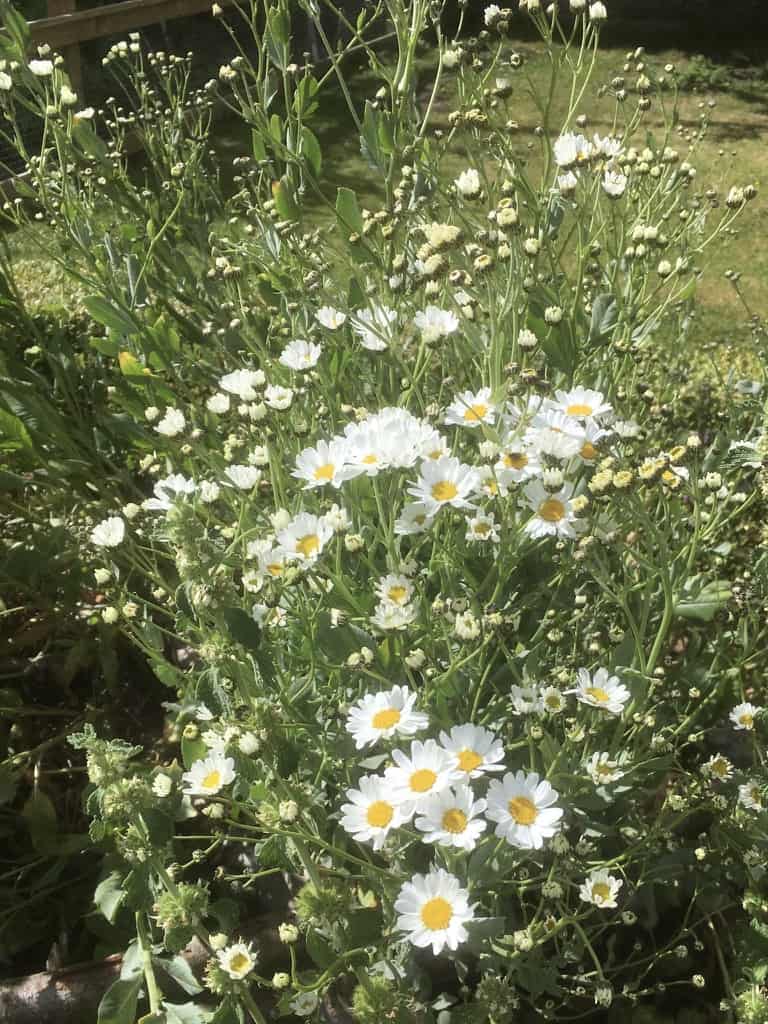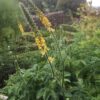Alecost (Tanecetum balsamita)
Flowers: September to October. Height: 90cm (36in).
Known as Costmary or Sweet Mary as traditionally this herb was thought to have provided the scent for the balsam that Mary Magdalene used to wash Jesus’ feet. Also called Bible Leaf as its leaves were sometimes used to mark pages in the Bible. It was a popular strewing herb in medieval times due to its balsamic fragrance and was widely grown in Elizabethan knot gardens.
Medicinal: One of the most interesting and complex of all herbs, it was introduced into England in the 16th century from the Mediterranean. It became extremely popular to aid with digestive and respiratory problems and used to combat colds and phlegm.
Culinary: Beer was a staple drink of medieval Britain. Alecost was used to clear, flavour and aid in the preservation of beer and ales before being superseded by hops which were introduced to Britain in the late 15th century. The leaves, stems or flowers were cooked and used for food or seasoning while the flowers were used for conserves, sweets and candy.



